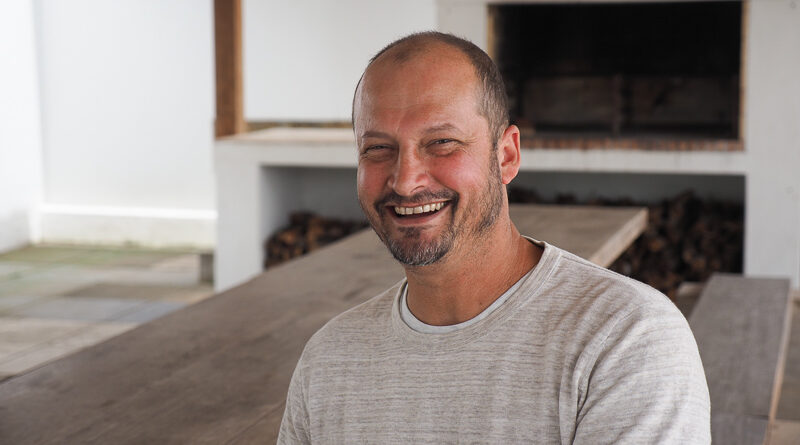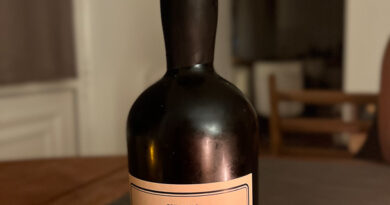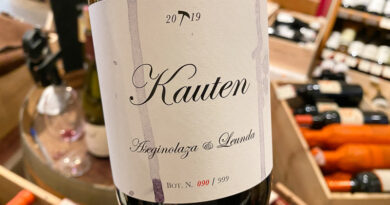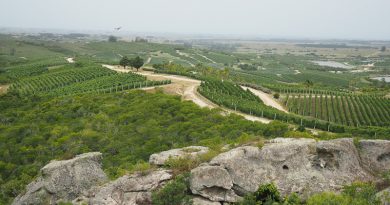In Franschhoek: Paserene, with Martin Smith
Martin Smith is the fellow behind Paserene. He’s an interesting CV: he spent 10 years making wine in Napa, which has influenced his taste of wine and also his approach to selling it. Returning to South Africa, he worked for a winery with a Californian connection, Vilafonte – a collaboration between South African Mike Ratcliffe and Americans Phil Freese and Zelma Long. Martin was there seven years, between 2010 and 2017.
‘I started Paerene in 2013, while I was still making the wines for Vilafonte,’ says Martin. ‘I spoke to Phil, Zelma and Mike, and they said you can do it, but you are not allowed to use any of the varieties that go into the M and C.’ This ruled out Merlot, Cabernet Franc, Cabernet Sauvignon and Merlot, which made the job of doing his own Bordeaux-style red a little trickier. Necessity is the mother of invention, though. ‘I wanted to make a Bordeaux wine because I used to make wine for Louis Vuitton in California for Newton Vineyard, and Bordeaux is the thing that makes my heart pump. So the first one, I made from Carmenere and Petit Verdot.’
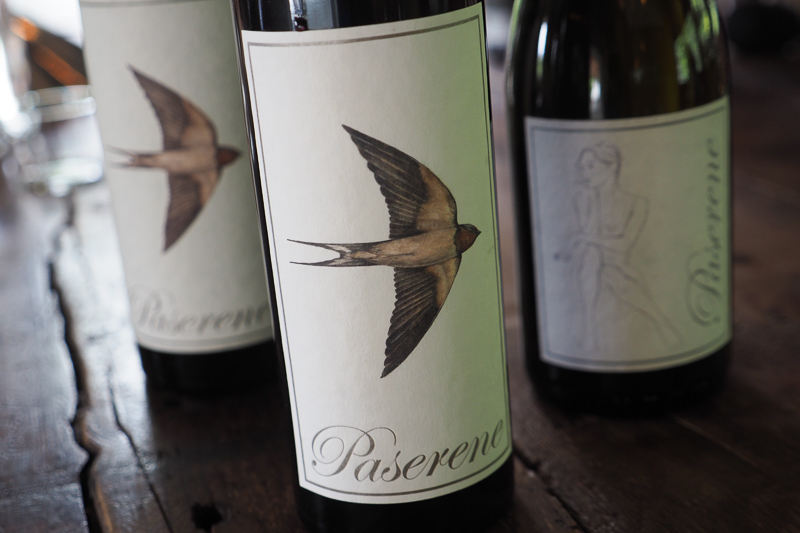
He sources from three different terroirs. Franschhoek is the hub, but has also buys grapes from Tulbagh for most of his high-end reds, and Elgin is where the top Chardonnay comes from. Martin has recently started making some less expensive wines – the Elements range – in order to help with cashflow. These will retail at around R130. There are two wines now, but there will be five in the end, including Chardonnay called Bright, a Rosie Rosé, the Emerald Sauvignon Blanc, Dark Syrah, and a Cabernet called Midnight.
For the Chardonnay, he was inspired by the Unfiltered wine that he made for Newton. ‘It’s a remarkable wine because they pick it super-ripe: anything between 27 and 28 Brix.’ They pick the vineyard five times only taking the most golden bunches. ‘Once you have it, you will love that wine forever,’ he says, describing it as tasting of honey, ripe banana and brown sugar. ‘I wanted to make that wine here, and the first guy I spoke to was Murray Barlow,’ he says. ‘At the time I really lovely the Rustenberg Five Soldiers. Murray couldn’t let him have any of the Stellenbosch fruit, but he did sell him some Elgin grapes.
Martin is a believer in South African Chardonnay. ‘I think the diversity of the variety is important. My wife and I are bringing out a Chardonnay range with five different appellations: Cederberg, Wellington, the southern Cape, Elgin, and Franschhoek. This will be a whole brand focused just on Chardonnay.’
THE WINES
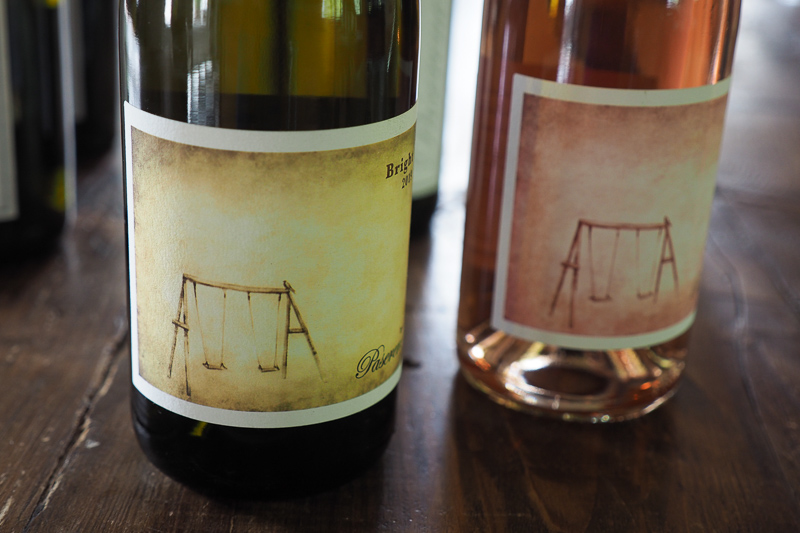
Bright by Paserene Chardonnay 2019 Western Cape, South Africa
Mainly Franschhoek, from pure sand, but also some Elgin and Tulbagh fruit. 20% new oak, all Francois Freres barrels. This is fresh and mineral with a chunky, pithy core and nice spiciness. Has some structure. Some mint and spice with rainy pear skin. Good weight. 91/100 (R130) (JG)
This Chardonnay is part of their new Elements Range. Mostly Franschhoek (clone 95), this also has pieces from Tulbagh and Elgin. This was native fermented in barrel (20% new) where it rested until bottling. Bourgogne inspired with a lovely lick of reduction on a lightly creamy, lemony palate, leading to light salts on the finish. 90/100 (TR)
Rosie by Paserene 2019 Tulbagh, South Africa
Blend of Carignan, Mourvedre and Syrah from Tulbagh. 50% in neutral barrels, 50% steel. This has a lovely mouthfeel, with supple red fruits and pears. Quite subtle with some warmth as well as appealing fruit. Pretty and floral, and nicely dry. 89/100 (R110) (JG)
Carignan, Mourvedre, Syrah are split between neutral wood and stainless in this Tulbagh rosé. Charming subtle strawberry, raspberry, light pepper, along a juicy, silken palate. 89/100 (TR)
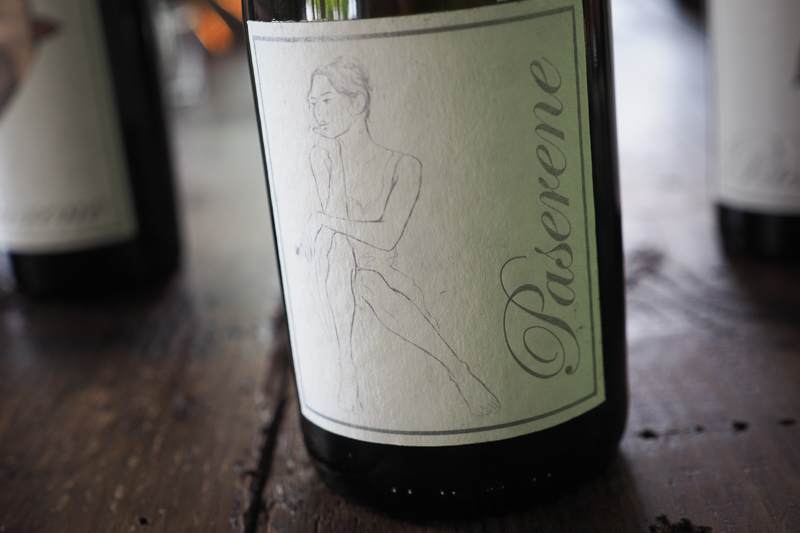
Paserene Chardonnay 2015 Elgin, South Africa
6000 bottles. Clone 95 and 96, pure koffieklip soils (ferricrete). Cool the grapes down to -1 in a reefer and press it for 7 hours, yielding 400 litres. Goes to barrel for 12 months and tank for four months. Nothing added except some sulfur before bottling. Rich aromatics of nuts, spice and honey. The palate is broad and fine-grained with nuts, spice and pear fruit. Multidimensional with layers of flavour and nice freshness allied to richness. Mealy, bready and has a savoury almost marmite character on the finish. 94/100 (R400) (JG)
Clone 95 and 96 from Koffieklip soils. After very cold grapes rest in the reefer, they are then gently pressed for 7 hours and native ferment with no additions. This spent 12 months in barrel, then 4 months in tank to tighten, prior to bottling unfiltered, with just a little sulphur. Creamy and gentle in the mouth, with lower acidity (house style) and flax, meadow herbs and subtle flake salts on the creamed corn finish. Lees is evident, as is bâtonnage. Powerful, but reserved. The woman on the label was created by an artist who drew her interpretation of the wine after tasting. 91/100 (TR)
Paserene Marathon 2013 Western Cape, South Africa
6000 bottles. This is the first vintage. Carmenere (Darling) and Petit Verdot (Tulbagh) blend, about 50/50. Fresh, juicy and vivid with bright berry and cherry fruits and some savoury, dusty structure. There’s a floral edge and some elegance with nice purity to the fruit. There’s some freshness here, but also nice silky warmth with a sense of elegance along with the ripe fruit. Has some iodine and blood savouriness, and is nicely soft. 93/100 (JG)
His love of Bordeaux is reflected in this Carmenere and Petit Verdot blend, coming off Tulbagh and Darling. Each was picked ripe and fermented separately, spending 22 months in 50% new oak, blended and then bottled for one year prior to release. This brooding red is filled with darkly perfumed kirsch, wild black fruits, all very well knit together with powdery tannins. A comforting and well integrated bigger red. 92/100 (TR)
Paserene Marathon 2015 Western Cape, South Africa
55% Cabernet Sauvignon, 34% Petit Verdot, 11% Carmenere, all from Tulbagh except for the Carmenere. Lovely blackcurrant fruit here with nice concentraton. Has a purity and freshness with some lush, sleek blackcurrant fruit allied to a bit of structure. Has just a hint of greenness with nice salty liquorice notes. Supple and delicious with great balance. New world in style but showing elegance. 94/100 (R400) (JG)
The 2015 blend sees 55% Cabernet Sauvignon, 34% Petit Verdot, and 11% Carmenere. The Cab certainly provides more structure, with dark graphite, gravels, tobacco bedding the ripe black cherry ed fruit. Firm and savoury, this muscular red still feels freshness through to the warming finish. 92/100 (TR)
UK agent: Nekter
Find these wines with wine-searcher.com

